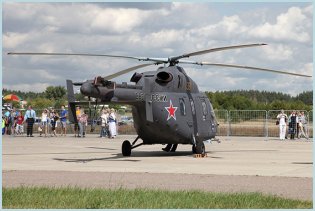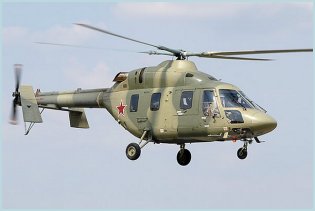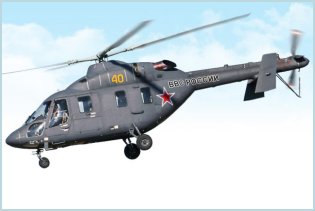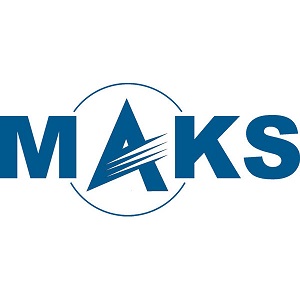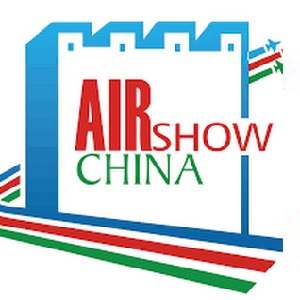|
|
||||||||||||||||||||||
| a | ||||||||||||||||||||||
|
Kazan Ansat / Ansat-U light utility multirole helicopter
|
||||||||||||||||||||||
|
|
||||||||||||||||||||||
|
|
||||||||||||||||||||||
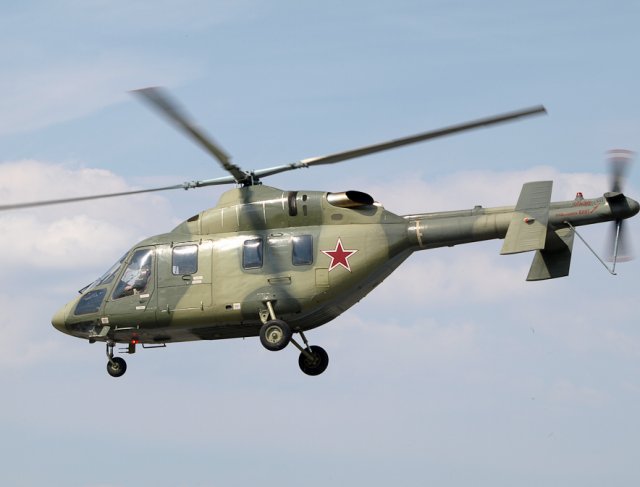 |
||||||||||||||||||||||
|
|
||||||||||||||||||||||
|
The Kazan Ansat is a Russian light, multipurpose helicopter manufactured by Kazan Helicopters. The Kazan Ansat helicopter was designed in the 1990s in order to replace the aging fleet of Mil Mi-2 light multirole helicopters. Design work on the Ansat helicopter began at Kazan in 1993, with structural strength and aerodynamic calculations subcontracted to Kazan State Technical University, production of the rotor to Aviation Scientific Co. and transmission to Aeromechanica Co.
The first Ansat flight was on Aug. 17, 1999. On 14 September 2001, Kazan Helicopters became the winner of a competition to supply Ansat-U training helicopters to Russian armed forces (beating Mi-34 and Ka-226). The assembly of the first Ansat-U prototype was completed in April 2004. Following the completion of tests, the full scale production of Ansat-U was authorised in December 2008. Russia ordered ten helicopters in small batches between 2008 and 2009. The helicopters were delivered to the Combat Training Centre in Torzhok and Syzran Higher Military Aviation School for Pilots in 2010. The latest batch was delivered to the Air Force Training Centre in Syzran in 2011. |
||||||||||||||||||||||
| Main Variants | ||||||||||||||||||||||
|
- Ansat SAR: intended for search and rescue, evacuation of casualties, and the transportation of special service personnel and their equipment. The variant features two stretchers for casualties, two seats for medical personnel and a hatch for the loading of strectechers.
- Ansat Ambulance: equipped with medical equipment, two stretchers, one seat for casualties, two seats for medical personnel, and a hatch for the loading of stretchers. - Ansat-2RC: attack helicopter variant armed with a 12.7mm machine gun and four hardpoints on two stub wings. The hardpoints can hold rocket launchers, bombs and anti-aircraft missiles. - Ansat-U: trainer modification of the Ansat helicopter. It incorporates redundant flight control systems and twin gas-turbine engines to deliver the high degree of safety required for training missions. The aircraft is equipped with a dual-control system and seating arrangement for six students. Can be used for special missions. - Ansat Observation: Prototype of scout helicopter based on the Ansat was first shown at Moscow Aerosalon in August 2001, with GOES 521 turret in nose and optical sensors developed by Optooil ZAO. |
||||||||||||||||||||||
| Technical Data | ||||||||||||||||||||||
| Design | ||||||||||||||||||||||
|
The multi-purpose light helicopter Ansat is built to a classic single-rotor design with a four blade main rotor and a two-blade tail rotor. The fuselage has a pair of doors in pilot's cab, and a pair of upwards and downwards opening side doors in transport compartment. After the seats have been removed, it can take 1000 kg of cargo inside. On external hook, it can take 1300 kg of load. The Ansat has a metal fuselage, composite non load-bearing parts, and layered fibreglass blades. The Ansat boasts the largest cabin in its class and it can be rapidly re-configured. The wide sliding door and large cabin volume allow the transportation of up to 8 passengers and makes it possible to allocate a maximum amount of equipment in special design versions. Equipped with shock absorbing seats for passengers. The conventional configuration is a high mounted tail boom carrying fixed horizontal stabilizer and two fins, two turbo-shaft power plants above the cabin.
|
||||||||||||||||||||||
|
Propulsion
|
||||||||||||||||||||||
|
The Kazan Ansat is powered by two Pratt & Whitney Canada PW 207K engines (470 kW - 630 h.p. each) and FADEC system that ensures the helicopter can continue to fly if one engine fails. The fuel capacity is 700 litres in either external panniers or underfloor, optional internal ferry fuel can be fitted. Alternatively, the Ansat can be equipped with two Salyut TV-500A turboshafts. The main transmission drives two alternators (each 200V, 400Hz), two fans and two hydraulic fuel pumps for separate systems.
|
||||||||||||||||||||||
|
Avionics
|
||||||||||||||||||||||
|
The Ansat is crewed by one pilot. The cockpit is equipped with Avionika FBW controls quadruple electronic system and duble hydraulic system. Automatic flight control is standard on all piloting functions and optional on navigation functions with KSU-A digital control system. The training model uses a KSU-A fly-by-wire flight control system and has a four-channel digital integrated control system. The helicopter can also be configured to provide various levels of control difficulty for pilot training. The use of the KSU-A allows for controlling the helicopter using the main and tail rotors without needing hydro-mechanical controls. The KSU-A is a fail-safe system due to the quadruple redundancy provided by digital and analog computers. The digital redundant integrated control system replaces hydro-mechanical controls with fly-by-wire controls. It ensures all required stability and controllability characteristics during all phases of flight, from takeoff to landing. In addition, the KSU-A is responsible for flight safety in the event of possible failures in the system and automated control of the technical state of the equipment while in-flight and on the ground. The KSU-A computer has four analog backup computers in addition to four digital ones. A radar can be installed in the nosecone upon request of the customer. The four-channel digital integrated system is capable of controlling the helicopter in all flight stages. The system allows the pilot to simulate engine shut off-mode without halting the engines.
|
||||||||||||||||||||||
| Accessories | ||||||||||||||||||||||
|
The serial Kazan Ansat is an unarmed rotorcraft. The helicopter features electrical system 27V, with battery; optional AC system, with second battery, and electric de-icing is available in option. Rescue hoist, cargo tight ups and IRF are also available in option.
|
||||||||||||||||||||||
| Specifications | ||||||||||||||||||||||
|
||||||||||||||||||||||
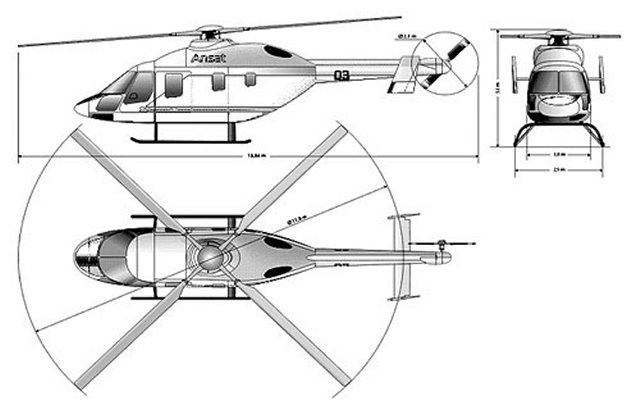 |
||||||||||||||||||||||
|
||||||||||||||||||||||


